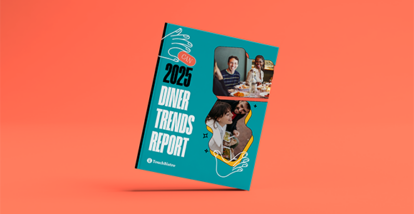Eggs, camera, action! The orders have been thoughtfully curated, and the drinks cautiously sipped. The plates have arrived, but before anyone knifes their Eggs Benedict, all hands pause; the eggs, waffles, coffee, and mimosas must be documented before being devoured. The question is, if no one “likes” it, did brunch really happen?
Brunch wasn’t always like this. It’s only recently that it’s been less about hash browns and more about #hashtags, but there is one constant that our beloved brunch has always been about: togetherness. Friends together with lunch food, together with breakfast food. So how did today’s brunch become what it is? And what was it before? Here’s a quick breakdown of how our favorite kind of early afternoon eating came to be.
1890s: “Brunch” Becomes a Word
Guy Beringer came up with brunch, or so it is claimed. In a 1895 London publication called Hunter’s Weekly, Beringer made it clear in his article, “Brunch: A Plea,” that a late social breakfast on Sunday, “Would make life brighter for Saturday night carousers”. He also suggested that alcoholic drinks be served, so we can thank him for making a place for mimosas and Bloody Marys at the brunch table.
A year later in 1896, the word, “brunch” was published in America for the first time. The article “The Newest Thing in Lunches” in the New Oxford News and Notes for Women, introduced readers to the “fad” of eating between breakfast and lunch.
1920s: The Fancy Hotel Brunch
As brunch made its mark across the pond in America, it was a luxury affair served in fancy hotels to the elite. There’s not much mention of brunch for a while after the late 1800s, other than Emily Post brunching with oysters, eggs and caviar at a posh hotel in the 1920s.
1930s: Early Adoption
In the thirties, brunch was adopted by the middle class. Housewives, business girls, and bachelors caught on to how convenient, cheap, and easy it was and began to have brunch at home. Frying up bacon, picking up donuts and baked goods, and setting out orange juice, tea and coffee was a no-nonsense way to enjoy a relaxing morning with family or friends.
1940s: Brunch is for Everyone
Taking on it’s birthright as a meal of leisure time, the people embraced brunch. One of the first brunch cookbooks was published in the forties. Brunch gained steady popularity because it was economic – a two-in-one meal with special touches not afforded during the week. Oatmeal for the rest of the week, but bacon, waffles, fruit, jams, and coffee on Sunday.
The 1950s: The At-Home Brunch
After WWII, the fifties saw a decline in Sunday morning church service and instead, a leisurely brunch at home took it’s place. Convenience foods began to appear on shelves, so the menu was a hybrid of homemade and pre-made foods like homemade jams, pancake mixes, eggs, and of course, coffee.
1960s & 1970s: Anything Goes Brunch
The freewheeling sixties and seventies gave way to a “do what you feel with this meal” mentality. Cookbooks conflicted on what should be served, and a disregard for rules meant the table could be set with anything from fondue to eggs to casserole. In true sixties and seventies style it was all about the spirit of brunch, and the only rule was that there were no rules.
The 1980s: Brunch Takes Over
One hundred years after brunch became a thing, newspapers claimed it had replaced the classic American meal, Sunday dinner. Although, the luxe glitter days of the eighties ushered brunch back to hotels and restaurants, and out of the house.
1990’s: Brunch All the Time
The people of the nineties were so in love with brunch that restaurants began offering it on Saturday as well as Sunday. Going out for brunch became far more popular than staying in.
2000’s: Brunch Goes Global
Chinese dim sum sees a rise in popularity, and pretty much any cuisine gets an egg slapped on top of it. Some people start lining up for brunch hotspots, while others roll their eyes and take a stance on brunch’s socio-economic implications.
Today: Brunch Hulks Out
Brunching has become a weekend activity worthy of classification of ‘sport’. Lineups are long, plates are piled high, syrup is infused, waffles are sandwiches, cocktails come in pitchers – it’s a little crazy. But because of the value of flipping tables, brunch has become more rushed than leisurely. Though one constant has remained the same: it’s still a social thing. Thanks to social media and foodie culture, it’s also about sharing it with the world.
The Future of Brunch
Who knows what the future holds, but in a few years maybe we won’t need lineups, stacks of pancakes, or to be endlessly scrolling and liking other people’s brunches. There’s 3D printing now, so perhaps we’ll soon be noshing on Eiffel Towers draped in bacon, or Coliseums filled with syrup.
Guy Beringer’s initial approach to brunch has served brunch well. It began as a way to sleep in and spend a relaxing time with hungover pals, and it’s still about spending some time with friends, even if they are just liking our choice of eggs from another part of the planet. The menu has been modified, leisure has taken a step back, but the one thing about brunch that hasn’t changed: One can’t brunch alone.
Check out our Brunch Pinterest board for inspiration for your brunch menu.
Free job application template for restaurants
Sign up for our free weekly TouchBistro Newsletter







